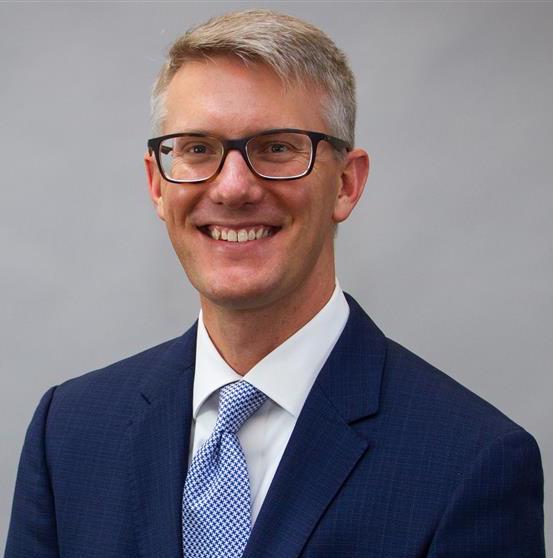Although rare, kidney cancer is the third most common type of solid tumor affecting children. Thankfully, pediatric kidney tumors are generally treatable and most have high cure rates. Treatment outcomes depend on several factors including age, tumor type, staging, genetics, the overall health of the patient, and the risk of treatment side effects.
Associate Professor in the Department of Surgery, Urology Division, CU Cancer Center member, and physician-researcher at the Children’s Hospital Colorado, Nicholas Cost, MD, explains how treatment should be personalized based on these factors. “Not all patients need the same treatment,” explains Cost. He stressed the positive outcomes associated with receiving care from a specialized multidisciplinary team, which can open the door for more treatment options, clinical trials, and a well-rounded care plan.
Cost brings an exceptional breadth of knowledge to pediatric urologic oncology, as being one of the nation’s only urologists who are fellowship trained in both pediatric urology and urologic oncology.
Renal tumors in children
Most childhood kidney cancers are discovered before they metastasize (spread) to surrounding organs. However, due to the location of the kidney, there is an increased likelihood of the diagnosis occurring after the tumor has become large enough to cause pain and swelling. “Even if the cancer spreads, we can still usually achieve high cure rates. It will just take more therapy, which can often mean more toxicity and side effects,” Cost says.
The most common types of kidney cancer in children are Wilms' tumor, clear cell sarcoma, and renal cell carcinoma. Many of these tumors have unknown causes and can affect all genders equally. In less than 5% of cases, kidney cancer will develop in children due to their genetics.
Specialized care from a specialized team
Cost serves as the Surgical Discipline Lead for the Children’s Oncology Group Renal Tumor Committee and is the co-director of the Surgical Oncology Program at Children’s Hospital Colorado. Cost contributed to forming this multidisciplinary team of specialists designed for a collaborative approach to cancer treatment. Additionally, as part of the CU Cancer Center, they contribute to groundbreaking research and are the only National Cancer Institute designated Comprehensive Cancer Care Center in the state of Colorado.
The approach to specialized kidney tumor therapy has been supported by the team’s research and clinical trials. With higher cure rates, they can now focus on preserving quality of life outcomes based on each patient’s unique disease process. Cost explains, “The big issues that we're starting to look at now are things like reducing the amount of therapy needed, preserving kidney function and their fertility potential for the future.” Approaching treatment with a focus on both organ function preservation and cancer remission equally can lead to fewer complications, disease recurrence, and improved quality of life outcomes.
Treatment is not a one-size-fits-all
Personalized medicine is the goal for most health care providers and has become a promising model in the accuracy of their treatment. According to the American Cancer Society, precision medicine looks at how a specific gene mutation might affect a person's risk of getting certain cancer or, if they already have cancer, how their genes (or genes in their cancer cells) might affect treatment.
"We go back to looking at the specifics, like the patient’s own genetic predisposition, genetic markers in the tumor, and patient factors such as age, tumor size, and stage, to help us decide the best treatment. Not everybody needs the same treatment, and we are trying to tweak that a bit.”
With an increase in cure rates, the focus is shifted to decreasing intensive treatments that have increased toxicity and side effects. Cost says, “We go back to looking at the specifics, like the patient’s own genetic predisposition, genetic markers in the tumor, and patient factors such as age, tumor size, and stage, to help us decide the best treatment. Not everybody needs the same treatment, and we are trying to tweak that a bit.”
Each patient is assigned a risk category that can determine how to maximize the cure while minimizing morbidity. The risk categories are very-low, low, standard, and high. The categories are then used to tailor their treatment.
Genetics Role in Treatment
Both genetic predisposition and genetic mutations of the tumor help to treat the patient. If a child has a predisposition, then it will be easier to follow-up with them before they develop a tumor or they can be found early.
The patients who are predisposed to Wilms tumor are often associated with certain conditions, such as Beckwith-Wiedemann, WAGR syndrome, aniridia, and hemihypertrophy, that relate to their genetic makeup. A recent study with the Children’s Oncology Group (COG) was done where the predisposed children were followed with a prescribed schedule. Because of this, they were able to find the cancerous cells early. This benefits the patient because they could be treated with chemotherapy with only a partial removal (partial nephrectomy) of the kidney giving them more kidney function. The study demonstrated that this was a safe and effective option with high cure rates. According to Cost, “Most of the time when children show up with kidney tumors, they are massive— about 11 or 12 centimeters (Because of this, partial nephrectomies in children are not generally done.
Certain findings within the tumor’s genetics can predict whether it’s more or less aggressive. A recent study from COG looked at an older generation of genetic findings. They found that they could overcome specific biomarkers within the tumor that indicated a more severe case and treated them more intensely.
“We found that we were able to then get outcomes that were nearly the same as the patients that didn't have the biomarker, which is a good example of tailoring the treatment to each patient,” explains Cost.
In the most recent study, Cost says, “We achieved high rates of cure in metastatic patients using a drug called cyclophosphamide, which is known to be toxic to the gonads and their fertility function.” Cost explained for the next trial where they will reduce the dose of this drug while augmenting it with other medications that hopefully make it less toxic. “It's kind of like you're dialing a knob up and down; we dialed up saw that it worked great. We now hope to dial it down enough to get the effects we need, without the side effects of damaging the gonads.”
Fertility Preservation
Cost described the importance of having the conversation of fertility preservation with the child’s parents in a way that shows its value in terms of their survival. Cost says, “We have to be the ones responsible for approaching the topic because later in life it will come up, and this is a one-time opportunity to do something about it.” Once patients receive chemotherapy or radiation therapies, their fertility systems will be affected. “By being proactive, it allows the patient and his/her parents the opportunity to think about it when they are in their 20s or 30s—after we've achieved the cure.”
The University of Colorado Anschutz Medical Campus has an active fertility preservation team led by Leslie Appiah, MD, associate professor and division chief of the Obstetrics and Gynecology division. She also serves as the director of the CU Fertility Preservation and Reproductive Late Effects program, formed in May 2020.
“It is important that oncologists and patients understand that this counseling should happen before cancer treatment,” says Appiah. “We need to make sure every cancer patient is given the opportunity to reap the benefits of these technologies.”
Treatment on a patient that was successful a year ago may not be successful in the preservation of another patient. This approach reinforces the importance of working alongside a multidisciplinary team that ensures the overall wellness of the child.
There are a lot of competing issues when faced with a kidney cancer or another tumor diagnosis for families. Cost’s ongoing work in this area looks at improving the personalized medicine model in conjunction with preserving quality of life and maintaining high cure rates. He says, “We can look at the numbers and see that the prognosis is extremely good, but it does not alleviate the stress felt by the patients and families. They have a hard time holding in their mind the two different ideas of quality of life preservation and cure. I try to spend a lot of time with these families, informing them of the entire process and their treatment options. A cure is not enough.”





.png)